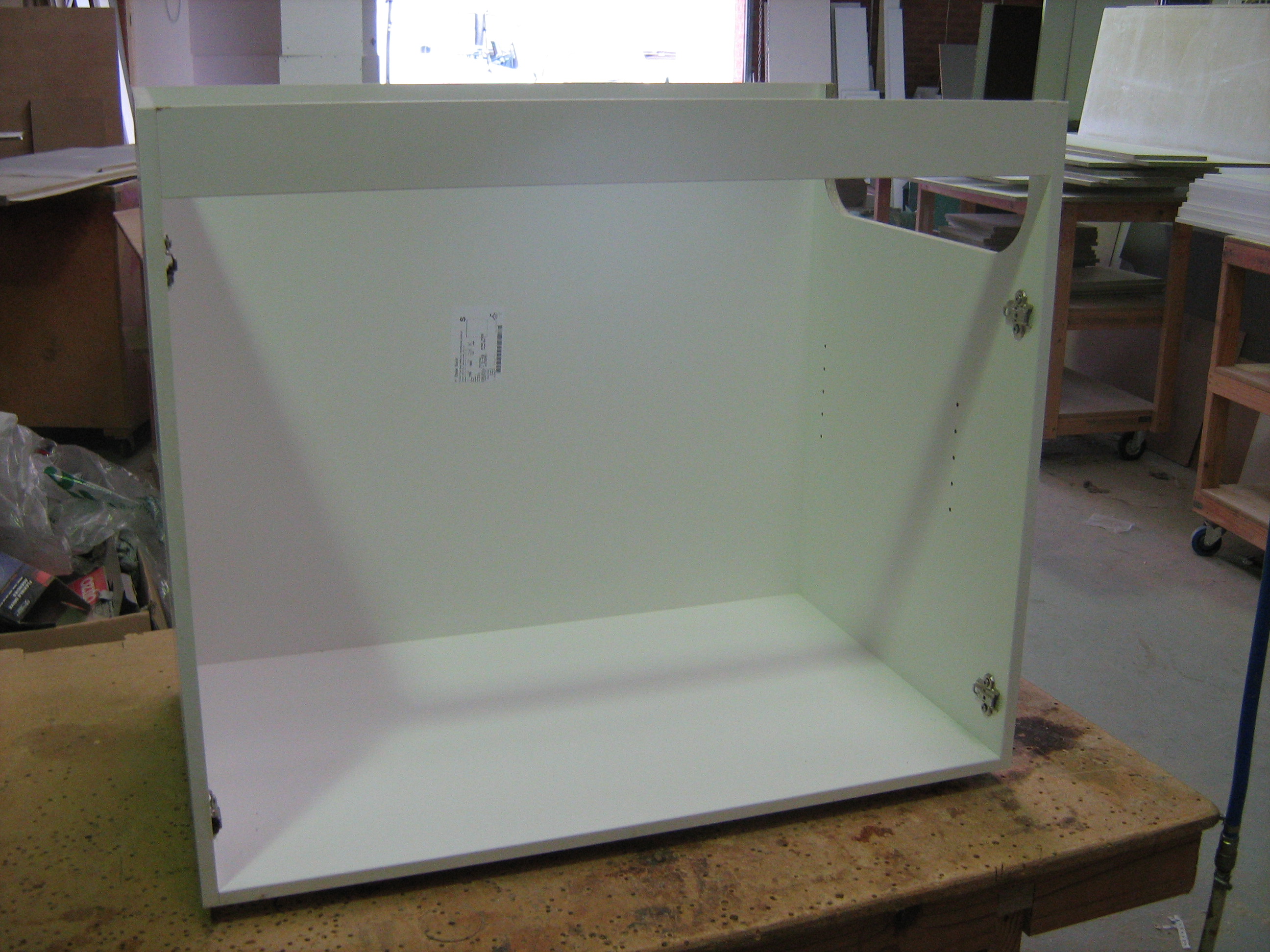|
Base Cabinets
A 'Base Cabinet' comes complete with all screws and hardware required to assemble the cabinet.
Note: In your order you will find the paperwork on your job, and in there is a detailed Assembly Instruction sheet, which explains 'which screw attaches to what and how many'.
Before you get cracking on the assembly of your cabinetry, please have a look here, as this area contains specific information to help you speed up the process and reduce errors.
1. Attach the Leg Bases to the bottom of the Cabinet. Click the button below to show you how it's done:
2. Attach the Hinge Mounts to the Ends (Gables). Click the button below to show you how it's done:
4. Join the Bottom (base) to a cabinet End (also known as a 'Gable'). Use the correct screw as identified in the detailed Assembly Instruction sheet (normally a 50mm screw). The joints are all butt joined, as the screws act as a steel dowel securing the pieces together.
Note: A machined location hole is drilled into the bottom front section of the End itself, and this is to identify the bottom of the End Front.
TIP: Make sure that when fixing the End to the Bottom, that this hole is at the bottom.


5. Join the remaining End (Gable) to the Bottom (Base) of the cabinet.
Note: The image below has a sink bowl cut out in it, as this was a special request from the customer, yours will not have this.


6. Attach the Back: Use the correct screw as identified in the detailed Assembly Instruction sheet (normally a 50mm screw).
Tip: Double check that the back is affixed the correct way up. It is a common mistake to put the back upside down, and if the Back has adjustable shelf holes in it, then these will not line up correctly when the shelf is installed.

7. Fix the Rail (Stretcher) to both the Cabinet Ends (Gables). Use the correct screw as identified in the detailed Assembly Instruction sheet (normally a 50mm screw, but this can vary).
Tip: A good idea is to pre-drill the rails using a 3mm drill bit (no thicker than this), to prevent the rail from ‘splitting’, especially if the rail is only a short one. Then countersink a screw head hole into the Cabinet End Panel (so that the screw head will finish flush with the Cabinet End Panel when screwed up). There are several ways to do this, but the easiest is to use an 8mm drill bit (as this is the diameter of the screw head), and drill into the Cabinet End Panel 1 to 2mm max. This is to avoid having the screw head not correctly countersinking into the Cabinet's End Panel, especially if the Rail is not very long:

Note: The Image below shows the Rail positioned vertically, and this is how it is done when you select the Sink/Tub option.

Note: The image below shows the Rail positioned on it's Flat, and this is how it is done as standard.

8. If you have selected any Applied Ends or Fillers to go with this cabinet, here is how to do these:
9. Attach Door to Cabinet, here is how to do these:


We hope that this information has been helpful for you.
If you need further help or more information on this topic please:
|
|


